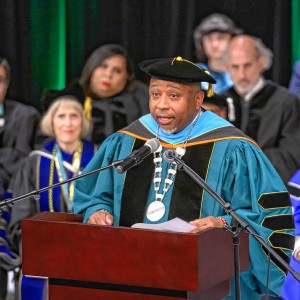Heated rhetoric as old as politics itself
| Published: 01-01-2023 8:20 PM |
Unhinged political rhetoric is at the forefront of much of the public’s mind, especially when attacks on the Capitol or U.S. House Speaker Nancy Pelosi’s husband are plastered across headlines. Yet despite the countless times political pundits have deemed such rhetoric unprecedented, historically, only a handful are unparalleled.
Inflammatory rhetoric dates back to Greek and Roman democracies, and it’s simply the “nature of politics,” says Boston University emeritus professor and longtime media consultant Tobe Berkowitz.
“Go back before the Civil War,” he says. “I mean, oh my gosh, the politics, the insults, the attacks were more personal and more vicious than you’re seeing today.”
Political rhetoric is the art of persuasion using language intended to influence public opinion. That language, however, is carefully curated and comes with what cognitive linguist George Lakoff calls “framing,” which dramatically influences political debate.
Lakoff describes frames as “mental structures that shape the way we see the world” that politicians can use to draw, or trap, people into their viewpoint.
“Framing is about getting language that fits your worldview,” says Lakoff in an excerpt from his 2004 book, “Don’t Think of An Elephant!” “It’s not just language. The ideas are primary and the language carries those ideas, evokes those ideas.”
When Lakoff wrote the book, he believed Republicans had the advantage when it came to framing due to their “message discipline.” Berkowitz says that is no longer the case in the era of Donald Trump and that Republicans had no choice but to be “dragged along.”
When it comes to achieving the goals Trump set for himself, Berkowitz argues that the former president is “brilliant with his rhetoric” by using effective rhetorical devices to create phrases that enter society’s vernacular, like “build the wall” or “China virus” or “Crooked Hillary” — the list goes on and on.
Article continues after...
Yesterday's Most Read Articles
 Holyoke man finds bear paw in his yard
Holyoke man finds bear paw in his yard
 Petition to block auto dealership on King Street falters in Northampton
Petition to block auto dealership on King Street falters in Northampton
 First look at how little Amherst’s police alternative being used called troubling
First look at how little Amherst’s police alternative being used called troubling
 Developer lands $400K loan for affordable housing project in Easthampton mill district
Developer lands $400K loan for affordable housing project in Easthampton mill district
 Developer pitches new commercial building on Route 9 in Hadley
Developer pitches new commercial building on Route 9 in Hadley
 Boyfriend accused in slaying of Hampden sheriff’s assistant, former legislator’s top aide
Boyfriend accused in slaying of Hampden sheriff’s assistant, former legislator’s top aide
“Other politicians are much more sophisticated: that’s the main difference [between them and Donald Trump],” Berkowitz says. “When you get a Joe Biden or a Barack Obama or a Bill Clinton, they’re also using incendiary rhetoric, but they’re doing it in a much more polished way.”
“I’m not saying that all things are equal … I mean, certain things are much more reprehensible than others. But if you’re looking at political tactics, both sides have the exact same goal, and that is to set the agenda using our rhetoric,” he adds. “Bad rhetoric is bad for democracy, but it’s been a part of democracy since the Greeks.”
By repeating rehearsed talking points and integrating them with nuanced approaches, politicians can create what Emerson College professor Gregory Payne calls “a mediated reality that isn’t always consist with reality. But if [politicians] can get people to believe it, then it becomes reality.”
Once this augmented reality is in place, Payne says politicians can use “trigger signals” to particular groups as a way to scare people, though there is a difference in strategy between parties.
“Part of the whole thing is that one party tends to be more, what I would call, hopeful and [asks] ‘How can we try to move forward?’ while the other party tends to be much more fear-oriented,” says Payne. “So you scare people into submission.”
In response to Republicans’ use of emotional and loaded language to scare the masses, Democrats have consistently pushed policing that language and creating a “safe space” where one can identify as whomever they please. But adding new aspects of language to make things more inclusive can add more fuel to an already-dangerous fire, and Payne says this constant push for anti-racist language could be damaging to the left’s platform and its uniformity.
“I think what happens is that in the attempt to be so progressive, we give this new generation [the ability] to name these things,” says Payne. “You can do that, but then you create a gap between people who are probably on your side. When you go so far [to one side], you take away the people in the middle.”
A prominent example of this divide is the use of the term “Latinx.” Though it’s used often in academia and in progressive campaigns, much of the community that this term applies to dislikes — or actively avoids— using it altogether. Nonetheless, almost every Democrat will adhere the language now deemed inclusive.
“There’s a certain irony to that, isn’t there? You go on college campuses and that’s very popular,” says Berkowitz. “But part of the problem is that both parties have elected officials who really have no reality of the life of their constituents. And good politicians can successfully connect because they maintain some kind of rhetorical connection with the people they’re representing.”
That kind of rhetorical connection cannot exist without the proper language, which Payne says is the most important aspect of politics, and can be seen in any mass movement, from civil rights to women’s liberation to Brazilian elections.
“One of my favorite rhetoricians, Richard Weaver, said language is a behavioral directive,” he says. “Democracy depends on us being able to find enough commonalities among the various groups to move forward.”
Kana Ruhalter writes for the Gazette from the Boston University Statehouse Program.

 New HCC president reflects on journey: Timmons sees his own struggles and arc in students’ paths
New HCC president reflects on journey: Timmons sees his own struggles and arc in students’ paths South Hadley man fatally shot in attempted robbery
South Hadley man fatally shot in attempted robbery Historic murals restored at Victory Theatre in Holyoke
Historic murals restored at Victory Theatre in Holyoke Boards balk at limiting use of Hadley Town Common
Boards balk at limiting use of Hadley Town Common
